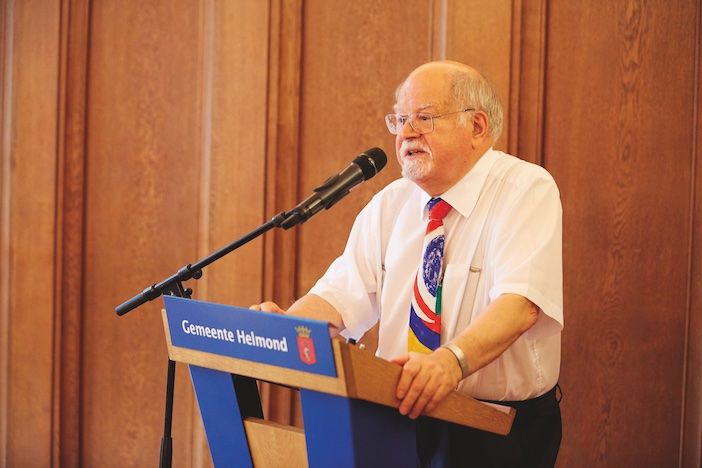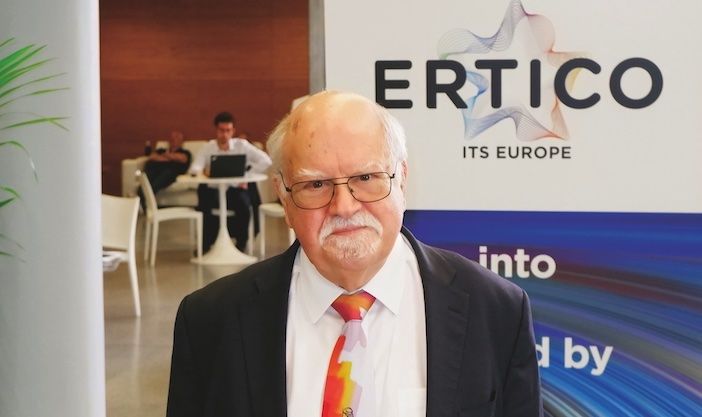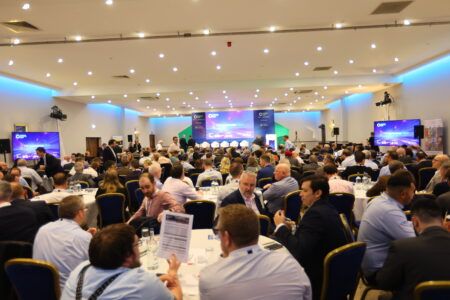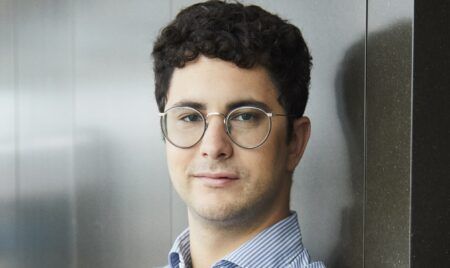As industry legend Eric Sampson steps down from his official ITS World Congress duties, TTi catches up with him to reflect on the last 30 years, get some advice for his successor and predict what’s next for the industry he will undoubtedly remain connected to
Eric Sampson is possibly the only person on the planet to have attended every ITS World Congress. But this extraordinary run is coming to an end as the unofficial Godfather of the Congress announced earlier this year that he is stepping down from his official duties at ERTICO – ITS Europe, after 30 years.
Sampson is a founding member of ERTICO, which was set up in 1992. He acted as chair of its Supervisory Board, helping to organize the very first ITS World Congress in Paris in 1994, heading a program committee to oversee content and acting as master of ceremonies for the event.
Over the years Sampson’s role at ERTICO evolved and at recent congresses he’ll be best remembered as senior program advisor and chief rapporteur – this second being a high-profile position which saw him take to the podium at every closing ceremony to give a summary of all the conference proceedings. A must-see for any attendees wanting a snapshot of where the industry is heading.
But when Sampson began looking ahead to this year’s Congress in Suzhou, China, he felt cognitive dissonance between his own beliefs and the political situation in the host country and began to see that it might be time for him to stand aside, dismissing suggestions he might take a year off and return for Dubai next year. “I don’t think that’s fair. If somebody comes in to do a job, they should stay,” he says. “I think it is time for someone else. I have my views on things, and they get listened to, but somebody else should get a chance.”
“Creating a World Congress program is a bit like being the father of 13 kids and trying to organize the social calendar!”
Wolfgang Hoefs was a clear choice as Sampson’s successor, having already impressed in his role as special advisor to ITS Hamburg ahead of that city’s successful World Congress in 2021. Prior to that Heofs had a distinguished career at the European Commission. “That’s a bonus because he understands the demand side, as well as supply,” says Sampson. “In the early days ITS was supply led with the declassification of defense technology and we thought, ‘What can we do with this? Navigation? Route recommendations?’ And now it’s the other way around. Instead of the company saying, ‘I can do this. It’s good, you should buy it,’ companies come to cities and say, ‘What is it you want to do? Because we think we can help you.’ So now it’s very much demand led.”
Hoefs, like Sampson before him, will be charged with putting together the timetable for each conference. Sampson has always done this with a large printed grid, a pile of successful papers and Post-it notes. “It’s important to ensure there a no clashes, you don’t want to have two sessions on the same subject at the same time,” he says.“Then it’s a question of taking a day and a lot of coffee and shutting the door to keep the cat out… there’s a photo somewhere of this huge plan with all the stickers on it and the cat sitting in the middle of it with a look that says, ‘Don’t move me or I’ll knock it over!”
After advice from Sampson (including cat deterrents) Hoefs helped oversee the program for the recent ITS European Congress in Lisbon. “He did it in a slightly different way. But we looked at the outcome and we thought, ‘This is good.’ Then we noticed we had Joost Vantomme speaking in two different places at once! We had to change that. Similarly, we made sure European Commission sessions weren’t on at the same time. It’s a bit like being the father of 13 kids and trying to organize the social calendar!” Once each conference is done Sampson collects soundbites from his small army of reporters, and uses them to deliver his famous summary at each event’s closing ceremony. The tasks and the honor now pass to Hoefs.

One part of the tradition that Hoefs may not continue is Sampson’s famously unique neckties – one created for each congress since Paris, where the attention garnered by a colorful off-the-rack number inspired him to begin getting bespoke ones made, by his designer Jane, for each subsequent event.
While the tie tradition has remained a constant, much else has changed. “When we did Paris, we didn’t have an organizing team, just freelancers,” recalls Sampson. “There was only a very early internet, and crude email, which took ages it was wasn’t even cheap! It was all done by fax. The real killer for me was no Eurostar – I had to fly over for a monthly meeting. I was invited to the Eurostar opening, which is a fond memory – The Queen amazed the crowd by speaking perfect French.”
As he bows out, Sampson believes much has changed in 28 congresses, even if some might say the industry is still talking about the same things. “I think that’s a bit unfair,” he says. “You could say, here’s Mr Rembrandt. He paints pictures. He’s been doing it for 25 years. And he’s got the same brushes and the same paint. Yes. But what appears on the canvas changes completely over a 25-year period. So, we may well have used the same elements. But we’ve used them in radically different ways.”
Looking ahead Sampson predicts big growth for the technologies discussed at congresses, particularly in the area of drones and urban air mobility. He also promises that he will not be a stranger and is more than likely to pop up at future events in an unofficial capacity. But as far as his personal commitments are concerned, beyond retaining his role as a visiting professor at Newcastle University and City University London, he is determinedly keeping his options open. “I will not be idle,” he says “But if you say, ‘What are you going to do apart from feeding the cat?’ I don’t know!”
This feature was originally published in the September 2024 edition of TTi magazine.





